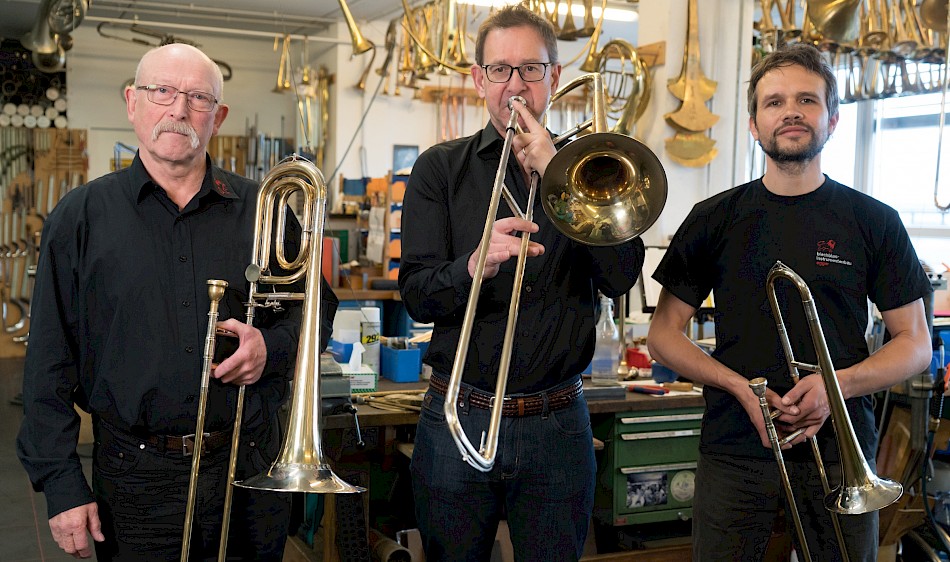Is the sound of a wind instrument influenced by the material it’s made of? But it’s the air that creates the music by making the sound waves, isn’t it?
Such questions have occupied instrument makers time and again over the years. In 1800, Lord Kent had bugles made for the British Army, some of brass, others of pure copper, and compared them. Apparently, those made of copper sounded louder, so these were the ones the Army bought. Charles Mahillon from Belgium had a trumpet constructed out of wood in 1864, and found that it sounded the same as a geometrically identical instrument made of brass.
Today, acousticians do experiments in their labs to find out the impact that materials have on sound. Empa in Dübendorf proved in 2018 that the mass of the instrument wall, the position of the supports soldered into the instrument and the type of alloy all had an impact on the vibration behaviour of the instrument. This influence is small, but perceptible, as musicians also confirmed who played the different instruments.
The sound of a wind instrument is fundamentally determined by the player, the mouthpiece and the geometry of the tube. The material, on the other hand, exerts its main impact on the instrument maker who has to adjust to it, see the following video. But the material clearly also has a secondary impact on the sound of an instrument.

